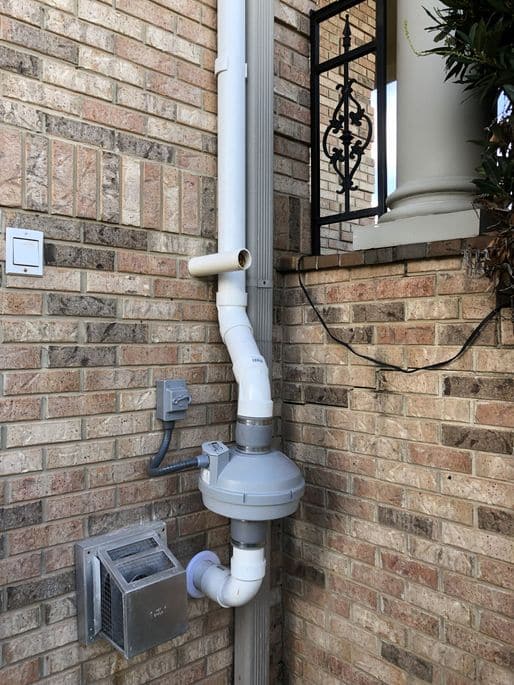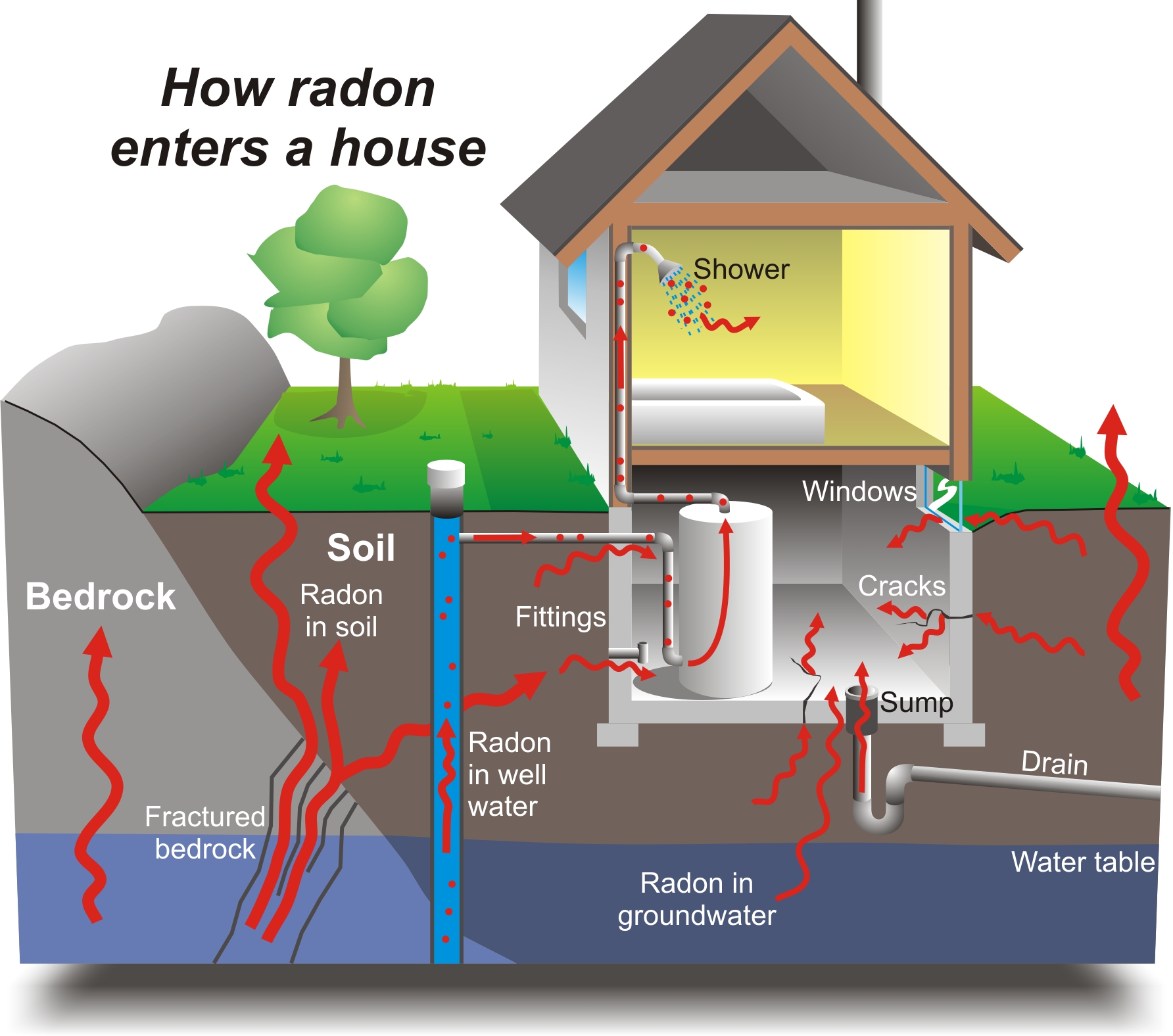Thus, unsafe radon direct exposure is mainly an anthropogenic environmental health concern. The U.S. Epa (EPA) has actually assigned January as National Radon Action Month as well as a time when health and wellness agencies across the country urge all Americans to have their houses examined for radon.
How much does it cost to fix radon in house?

The cost of a mitigation system may vary according to the home's design, size, foundation, construction materials and the local climate. Radon reduction systems average costs nationally are $1,200 with a range from $800 to $1500 common depending on house and market conditions.
Radon-induced cancers are brought on by reduced as well as modest levels of radon as in the residence atmosphere. Thousands of hundreds of United States citizens receive as much radiation as did people living near the Chernobyl plant at the time of the nuclear crash in 1986. Cigarette smoking has a synergistic effect, boosting the radon-related risk of lung cancer cells by a variable of 10.
Does seller have to fix radon?
It's very likely that your future buyer will make you fix the radon problem before they will purchase the home. It's good to just take care of it during your real estate deal. Sometimes the seller pays for it all, sometimes they fund a credit and sometimes there is a split.
Direct exposure to much lower levels of this well-known carcinogen might take place inside your home in residences built on soil that has a high radium web content as well as is launching radon into the surrounding setting. The finding of unacceptably high degrees of radon in some home atmospheres has triggered concern concerning the risk of lung cancer cells as well as rate of interest in widespread testing of houses. Home degrees of radon never resemble the level experienced by miners, so some uncertainty continues to be concerning the overall risk posed by exposure to house radon. Nonetheless, a lot of authorities concur there is a small yet actual boosted risk of lung cancer connected with raised house levels.
What kind of cancer is caused by radon?
Radon decays quickly, giving off tiny radioactive particles. When inhaled, these radioactive particles can damage the cells that line the lung. Long-term exposure to radon can lead to lung cancer, the only cancer proven to be associated with inhaling radon.
The risks to your wellness from radon
What do you do if your house has radon?

Radon can seep into any home that is in contact with the ground. It is undetectable unless you perform a radon test. It is the second leading cause of lung cancer and according to the EPA and CDC, it kills more than 20,000 annually. It is not something you want in the home you are buying.
Many states have active radon testing as well as mitigation programs in place, which need screening in buildings such as public schools. Nevertheless, these are not standardized across the country, and also the guidelines and policies on decreasing high radon degrees are even less common. Just about 20% of all colleges nationwide have actually done testing, despite the fact that the EPA suggests that every college be tested. These numbers are probably low enough to make sure security of most of kids from raised radon exposures.
Learn why radon threatens as well as why it's so hard to identify without screening. In the United States, roughly 14 states have a state radon programs which train as well as permit radon mitigation service providers as well as radon dimension professionals. To identify if your state licenses radon specialists call your state sendspace.com/file/cw3phz health and wellness department.
Why is radon bad for you?
Radon produces a radioactive dust in the air we breathe. The dust is trapped in our airways and emits radiation that damages the inside of our lungs. This damage, like the damage caused by smoking, increases our risk of lung cancer.
How long does radon stay in the air?
It can be found in all 50 states. Once produced, radon moves through the ground to the air above. Some remains below the surface and dissolves in water that collects and flows under the ground's surface. Radon has a half-life of about four days - half of a given quantity of Visit website it breaks down every four days.
Where is radon found in the home?
Radon is a radioactive gas that has been found in homes all over the United States. It comes from the natural breakdown of uranium in soil, rock, and water and gets into the air you breathe. Radon typically moves up through the ground to the air above and into your home through cracks and other holes in the foundation.
How much does radon cost per gram?
Radon is available at a cost of about $4/mCi.
- The Canadian guideline for radon in interior air for homes is 200 Becquerels per cubic metre (200 Bq/m3).
- Over the years, information that tracks radon degrees shows that a large percentage of Pennsylvania houses have a severe radon trouble.
- Radon gas is dangerous, and if the problem goes unattended, the radon focus remains to rise inside your residence.
- Radon gas enters your home or various other property from the outdoors, and also gradually, slowly builds up to hazardous levels that can result in a boosted risk of lung cancer cells or respiratory problems.
- Radon gas testing will aid guarantee your security, and the process of radon screening is strongly recommended by The Division of Environmental Management (DEP) adhered to by mitigation and also remediation if needed.
Is my house in a radon affected area?
Outside of your home, it remains at low levels and is relatively harmless. In the indoor environment, it wreaks havoc on your lungs. Radon is a carcinogen that causes lung cancer. While increased levels of radon can occur in the soil beneath any home, there are specific areas of the country that are at a higher risk.
What is radon in the home?
Radon is a radioactive gas that has been found in homes all over the United States. It comes from the natural breakdown of uranium in soil, rock, and water and gets into the air you breathe. Radon typically moves up through the ground to the air above and into your home through cracks and other holes in the foundation.
What causes radon?
Being exposed to radon for a long period of time can lead to lung cancer. Radon gas in the air breaks down into tiny radioactive elements (radon progeny) that can lodge in the lining of the lungs, where they can give off radiation. This radiation can damage lung cells and eventually lead to lung cancer.
How effective is radon remediation?
The Surgeon General and the EPA recommend testing for radon and reducing radon in homes that have high levels. Fix your home if your radon level is confirmed to be 4 picocuries per liter (pCi/L) or higher. Radon reduction systems work. Some radon reduction systems can reduce radon levels in your home by up to 99%.
Would you buy a house with radon?
Radon is a naturally occurring radioactive gas which may be found in indoor environments such as homes, schools, and workplaces. Radon is the most important cause of lung cancer after smoking.
Does home insurance cover radon mitigation?
homeowners insurance and radon remediation While home insurance is designed to financially protect you from sudden and unexpected perils such as fire or theft, it typically won't cover things that can be considered related to home maintenance like radon testing and mitigation.
Is radon only in the basement?
Radon is completely odorless as well as being invisible. Because it is often found unexpectedly in basements, some people mistakenly believe that it only occurs in basements. Most commonly homes with basements are suspect for having higher radon levels.
How common is radon in a home?
It's common: About 1 in every 15 homes has what's considered an elevated radon level. The gas is odorless and invisible, says the EPA, and it causes no immediate symptoms, so the only way to know if your home is affected is by testing your individual residence.
Is radon something to worry about?
The average home has about 1.3 pCi/L of radon. Such levels aren't enough to worry about, but under the right conditions, they could make you sick. According to the EPA, a nonsmoker who was exposed to average levels of radon for a lifetime would have a 1 in 500 risk of developing lung cancer.
Should I buy a house with high radon?
EPA RECOMMENDS: If you are buying or selling a home, have it tested for radon. For a new home, ask if radon-resistant construction features were used and if the home has been tested. Fix the home if the radon level is 4 picocuries per liter (pCi/L) or higher.
Is a radon level of 5 bad?
Safe radon levels. The best radon level measurement would be zero. The average global outdoor radon level varies between 5-15 Bq/m3, equal to 0.135-0.405 pCi/L. For every 99.9 Bq/m3, or every 2.7 pCI/L increase in long term radon exposure, lung cancer risk rises 16 percent.